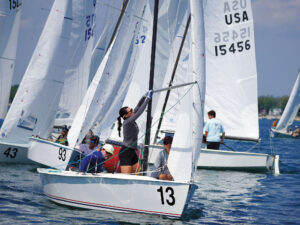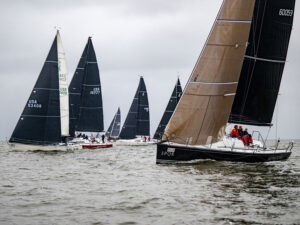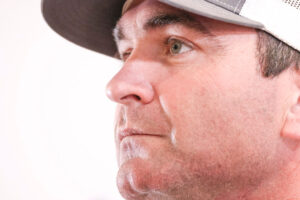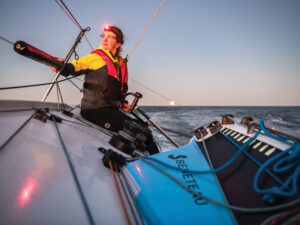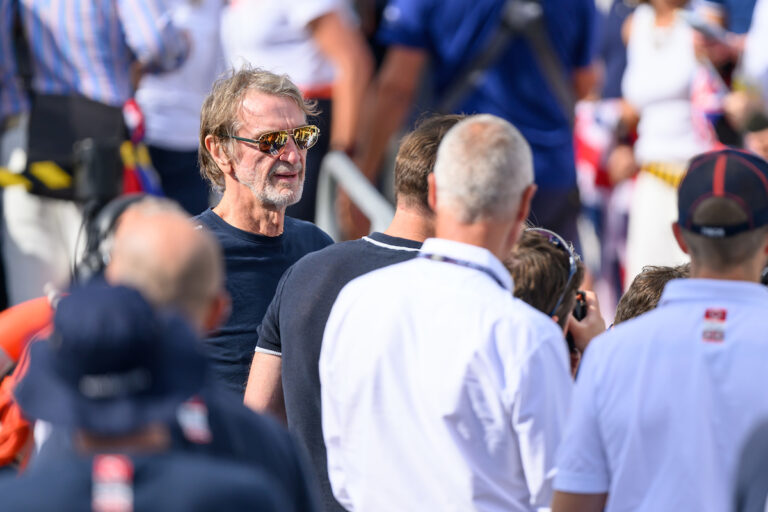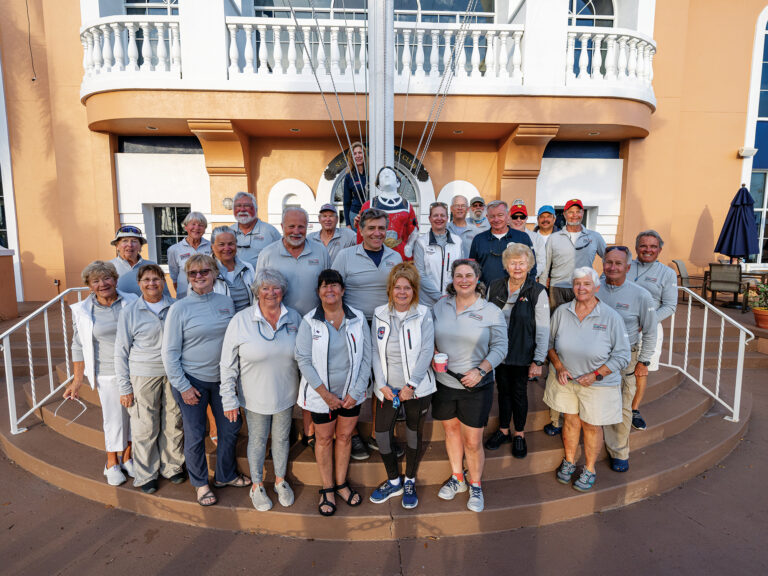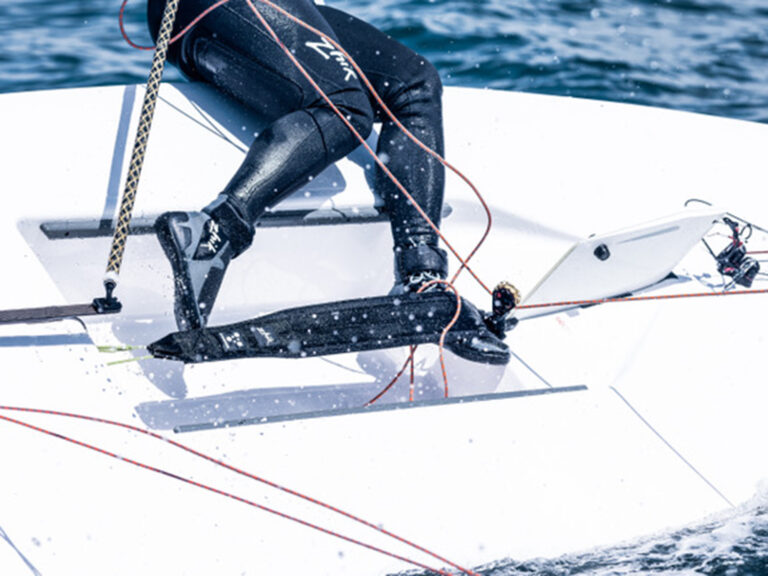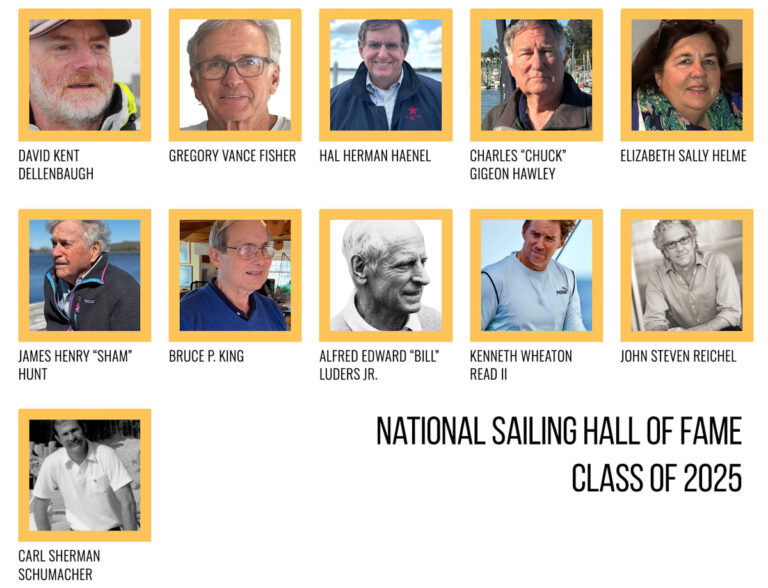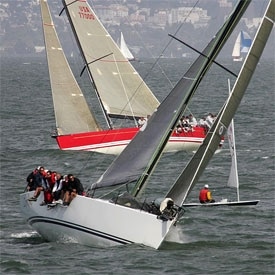
IRC Feature
The 2004 St. Francis YC Big Boat Series, presented by Rolex, provided a unique and fascinating look at the present state of big-boat racing. Not only was there an astonishing variety of classes, rules, and scoring systems used-including one-designs, the Transpac 52 box rule, and Americap-but for the first time in the United States, the popular European rule called IRC was used to rate competition in two classes. Widespread dockside discussion of the trade-offs among formats resulted, and the decision a few months later to use IRC at other major U.S. regattas puts an even finer edge on the discourse. Nine classes raced, including the Farr 40, J/120, J/105, Beneteau 40.7, and Express 37 classes. One-design remains the dominant format at this level of competition, and the focus is on the racing itself and preparation of the boats. Substantial effort is spent on boat optimization within the one-design rules, but in a competitive class, many of the top boats are optimized, so the winners are determined on the water. As usual, the post-race chatter among these class sailors focused on what happened on the water. The other four classes raced under three different rules. The Transpac 52s sailed boat-for-boat using their box rule. Two measurement-rule divisions sailed under IRC using its single number time-on-time scoring. And the Santa Cruz 52s, which race in various configurations, used the Americap measurement rule. Box Rules In a recent interview in the e-mail newsletter Scuttlebutt, Ken Read summarized the advantages of box-rule racing: “[The TP 52] is potentially a great class for offshore one-design owners who want a more grand-prix-type class, who love the close racing, but want to add a development feature…to be unique and work hand in hand with designers, builders, sparmakers, and sailmakers.” Box rules also share with one-design rules another advantage. Somebody actually thought about what boat characteristics are attractive to owners and created a rule (or one-design) that had those characteristics. So when Bill Lee and his committee defined the TP 52 rule, they designed the rule so that every TP 52 is fast, stiff, safe, simply rigged, and amply canvassed. As a result, TP 52s are fun boats to sail, the sailors and owners love them, and the sailors and owners in all other fleets admire them. It is now proven that box rules work for grand-prix racing. If owners want to mostly compete on preparation and sailing, one-design is the answer, but if owners also want a development component and to race intensely at the top of the sport, then racing in a box-rule class like the TP 52 is the answer. There was discussion about additional box-rule classes. There’s no consensus, but many folks would like to see a 30-foot box rule that would yield a fast, seaworthy, strong, cost-controlled boat that would be fun to race on closed courses and safe to race across oceans. There was also discussion about a very developmental, very open, no-cost-control 30-Meter class that could yield stunningly fast, likely canting keel yachts, to compete for line honors in elite ocean events like the Transpac, Hobart, Fastnet, and Bermuda races. Some people believe that there should someday be a 40-foot box, but few see any near-term need given the terrific one-design racing in the Farr 40 class. There’s increasing consensus (in the United States) that it’s inappropriate to use measurement rules for grand-prix sailing, i.e. at the most intense competitive end of our sport. The arguments are many and convoluted, but the one recurring observation is that measurement rules are typically intended to rate a wide variety of existing boats, some of which have slow features. To attempt to rate these boats, the measurement rules have to give credit for slow features. Designers are smart, have powerful computer-modeling tools, and are relentless about working out where too much credit is given for slow features. The designers then design race boats that intentionally incorporate those features they’ve determined aren’t quite as slow as the rule “thinks.” Examples of this are well known, such as beamy IOR boats with pinched ends and light keels with ballast in the bilge. The racing was the best ever, but the boats were not great sailboats. Likewise, early IMS boats were great, but more recent, optimized IMS boats have high freeboard, wooden keels, ballast in the bilge, and are somewhat stodgy. Middle Measurement Rules While it’s no longer widely thought in the United States that it makes sense to race under measurement rules at the grand-prix level, it’s widely agreed that big-boat sailing needs a “middle” measurement rule that can rate a wide variety of boats in serious-but not grand-prix- events. Consider the Bermuda Race or Transpac fleets; there are lots of gorgeous boats, which anyone would be delighted to go cruising in, that are racing to Bermuda or Hawaii and need ratings. Americap and IRC are the most common “middle” rules in use today, and with both used at Big Boat Series, the event became a great forum for discussing their relative merits. One advantage of IRC is that it is becoming more prevalent internationally. It’s a measurement rule that includes subjective factors, and it’s generally thought that the use of these factors within the IRC allows it to rate a wider variety of boats than it otherwise could handle. On the other hand, some (particularly American) competitors don’t like subjective factors in any measurement rule because they worry that the success of their boat will be determined by mysterious folks in a “smoke-filled room,” picking ratings for their friends-a common complaint made about PHRF. IRC has succeeded in spite of concerns about the subjective factors, largely because IRC is expertly run by Mike Urwin of the Royal Ocean Racing Club rating office. Urwin is widely regarded as doing a fair and insightful job of adjusting the subjective factors. In spite of the cynics, who point out that PHRF would work as well if God (or Olin Stephens) ran it, IRC is working well, in part because its underlying measurement rule seems to work well, and in part because of Urwin and his staff. Urwin’s job will get tougher as more boats are designed specifically to the IRC, and he must adjust the rule to provide fair competition without having the rule look too “PHRF-like.” This seems likely to happen more quickly now with more U.S. events using IRC (see box, p. 38) Many competitors think IRC has an advantage because it uses simple, one-number, time-on-time scoring. While this scoring system doesn’t adjust time allowances in courses with different wind-angle and wind-velocity content, the system has the advantage that the ratings and scratch sheets are published in advance, and any competitor can easily work out his or her interim and final results, during and after each race. Light-air boats win the light-air races, and downwind boats win the downwind races, but that doesn’t strike many competitors as unfair because they understand how the time allowances are generated long before the event takes place. For example, half of the races in the Big Boat series had more beating than running, because the finish of half the races was 4 miles upwind of the start. The simple one-number scoring of the IRC doesn’t account for this, and so upwind-oriented boats had an advantage as a result. Many competitors don’t feel that a measurement rule needs to remove all of the “horses-for-courses” influence in the results of yacht races. In fact, some feel that leaving such influence in the results spreads the trophies around a bit, and is good for the health of the racing fleet. Most competitors felt IRC did a reasonable job of rating the existing West Coast boats against each other at the Big Boat Series, albeit with a slant favoring the best upwind boats. However, the West Coast fleet in the series got soundly beaten by the two purpose-designed IRC boats that came to the regatta, Aera and Zephyra. In fairness to IRC, however, these two boats were expertly sailed. The dock-talk observations were that IRC favors boats that are stable, have small jibs, and have simple (few-spreader) rigs. This has the advantage, however, of allowing production boats to do pretty well under IRC, which is great for the fleet. The general consensus seemed to be that if IRC turns out to be somewhat type forming, like all earlier measurement rules, and if the type is like Aera and Zephyra, at least they seem to be very nice boats. (To this point cynics note that early IMS boats were great, too, but consider what the latest IMS boats look like.) Americap Americap is a measurement rule (run by US SAILING) that has the advantage and disadvantage (relative to IRC) of having no subjective factors. This is comforting to some who distrust the “smoke-filled-room” aspect of the subjective factors, but it has the disadvantage that measurement-rule science is not sophisticated enough to fairly rate the entire variety of different boat types without subjective factors. For example, nobody has developed a purely objective measurement rule that will fairly rate a bumpy, pinched-end IOR boat relative to a newer design. On the other hand, Americap is impressive in its ability to reasonably rate new high-performance boats such as those with canting keels or TP 52s. So there’s talk in the United States that if Americap has a descendent, it should be based on the highly regarded Americap VPP (which continues to improve), but should additionally contain some subjective or heuristic factors to increase the range of boats that can be rated. Americap’s complicated scoring can be seen as a disadvantage. Americap still supports its original Performance-Line scoring (see usailing.org/americap); it also includes time-on-distance based ratings for fleets that are used to that approach. And in 2004, Americap also added time-on-time ratings for use in tidal-flow venues such as San Francisco. Americap’s history at the Big Boat Series illustrates this complexity. The 2003 Big Boat Series used Performance Line scoring. While Americap’s VPP is highly regarded, Performance-Line scoring misinterpreted the elapsed time of the fleet as an indication of wind speed and generated time allowances that were less sensible than if a simpler time-on-time rating had been used. Learning from this, US SAILING added a Tidal Flow time-on-time rating to each Americap certificate in 2004 and recommended that it be used in places like San Francisco. Due to a misunderstanding, St Francis YC didn’t use the “Tidal Flow” ratings for the Santa Cruz 52s, and used Performance Line scoring instead. Again Americap generated inappropriate time allowances, misinterpreting slow races as being in light air, when in fact the races were windy and sailed in adverse current. If Americap does spawn a descendent, the new rule should take advantage of the lessons learned from IRC’s success and from the Big Boat Series, and use one-number time-on-time scoring. A possible advantage of Americap’s sophisticated VPP is that Americap could supply different TCFs for different course configurations or for different wind ranges. In principle, event organizers could even do something similar to what the Transpac Race does, which is to provide custom wind mixes to US SAILING and receive custom ratings for the event. Some folks figure that this would be a significant advantage over IRC, so long as the TCFs that were to be used for an event were selected and published far in advance of the event, to avoid any suspicion that the winner was being selected in the feared “smoke-filled-room.” However, the simplicity of a single-number system is attractive and there are those who feel that having some “horses-for-courses” influence in the result is good, and that simplicity is good, so it’s fine to have a single TCF. Lower Handicap Rules It’s impossible for any measurement rule to fairly rate all boats, so for local racing where it’s essential to rate all boats, the consensus is that a subjective, inexpensive-to-run, performance-based handicap rule is needed. In any discussion of rating rules in the United States, PHRF needs to be recognized as the most widely used handicap system in history. Being subjective, it can rate absolutely any boat. It has the disadvantage that, being subjective, it is inappropriate for use in serious racing. To return to the Big Boat Series, it’s worth noting that after the demise of the IMS on the West Coast, the Big Boat Series used PHRF-derived ratings for a few years, but the subjective nature of the ratings caused too much heartburn for the rating committee, so the Big Boat series changed to Americap, and for 2004 to IRC. On the Horizon While there’s no widespread agreement on the topic (and likely never will be), there appears to be an emerging model that racing can be sensibly thought of in three areas, that have different needs. Grand-prix racing, the most intense and competitive racing in sailing, can clearly have its needs met by racing one-designs or by racing in box-rule boats, although we need additional box rules in some different size ranges. Many expect that additional box rules will experience the success of the Transpac 52, so long as the boats that they define are fast, fun, simple, and safe, as is the TP 52. Serious-but not grand prix-racing needs a measurement rule that can rate a diversity of existing boats and provide simple scoring. The good news is that there are multiple options here, including IRC and Americap and its descendents; but clubs and other race organizers will have to push hard to provide enough events at this level to ensure ample competition. Finally local handicap racing will continue to need a system that can rate absolutely any boat. PHRF is meeting this need in the United States. Sources: Thanks to the competitors of the Big Boat Series, Antigua Race Week, Cork Week, and the Maxi Yacht Rolex Cup for their prolific dock-talk, which is incorporated in this article. In particular, thanks to Peter Isler, Steve Benjamin, Jim Pugh, Alan Andrews, Ken Read, Eddie Owen, John Reichel, Mike Urwin, Bill Lee, Dan Nowlan, Norman Davant, Jim Teeters, Barry Carroll, Ben Mitchell, Dick Horn, Dee Smith, Peter Reichelsdorfer, Robbie Haines, all of the members of the International RWP, and many others for their direct and indirect input. This article doesn’t represent any individual’s particular point of view, but is intended to be a slice through the current thinking of a large group.

